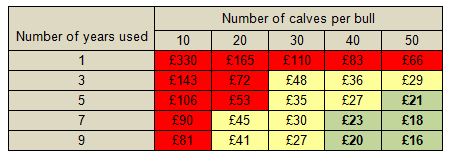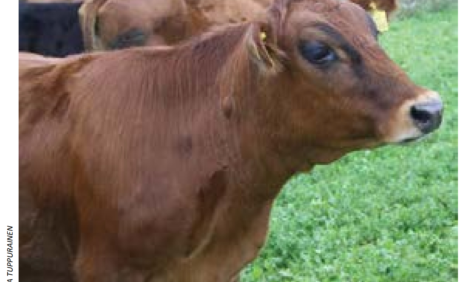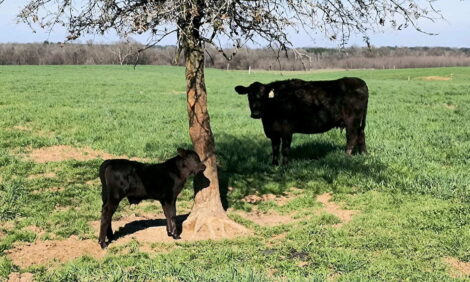



Is Your Bull Fit For Purpose?
Some shocking figures have revealed the cost a dud bull can bring to a beef herd and indicated that bigger is not necessarily better.Over a third of bulls are not cutting the mustard, according to data collected by the English Beef and Lamb Executive (EBLEX).
EBLEX beef and sheep specialist, Dylan Laws, advises that the age target for a fit and fertile bull should be at least six breeding years. Additionally, he should be capable of successfully serving at least 90 per cent of 50 fertile, disease-free females in a nine-week period.
The 2013 EBLEX bull survey suggests 35 per cent of bulls bought in the past five years have been culled or have died, with poor mobility being the main cause for culling. A BCMS dataset of 18,000 bulls born from 2000 to 2003 also showed about a third failed to work for more than three years.
If a bull costing £4,500, with a cull value of £1,200 and running costs of £500 a year, produces 30 calves a year for three years, that equates to a cost of £48 per calf produced.
If the same bull produces 40 calves a year over seven breeding seasons, the cost is just £23 per calf produced. Therefore, fit-for-purpose bulls can mean significant cost savings (see table).
Fighting the Market Signals
Buyers at bull sales tend to be drawn to the bigger or heavier bulls and this encourages breeders to feed high levels of concentrates, for prolonged periods, to achieve high growth rates.
However, such feeding strategies can increase the risks of skeletal problems, such as arthritis and haemorrhages in the hoof, leading to mobility issues. It can also reduce sperm volume and reserves, and increase the risk of sperm abnormalities.
Producing bulls to target growth rates with the aim of maximising the use of forage and optimising concentrate use will reduce feed costs and help ensure they are fit and fertile, producing more calves in their lifetime. A good target is not to exceed 40 per cent concentrates in the total diet as Dry Matter (DM).
Consider EBVs
Bulls do not need to be over-fed to achieve high Estimated Breeding Values (EBVs). EBVs identify cattle with superior genes for growth, even when they are reared on high-forage diets and are lighter than those reared in more intensively-fed herds.
Providing that there is enough genetic linkage between recording herds, EBVs will take these differences in herd management into account.




